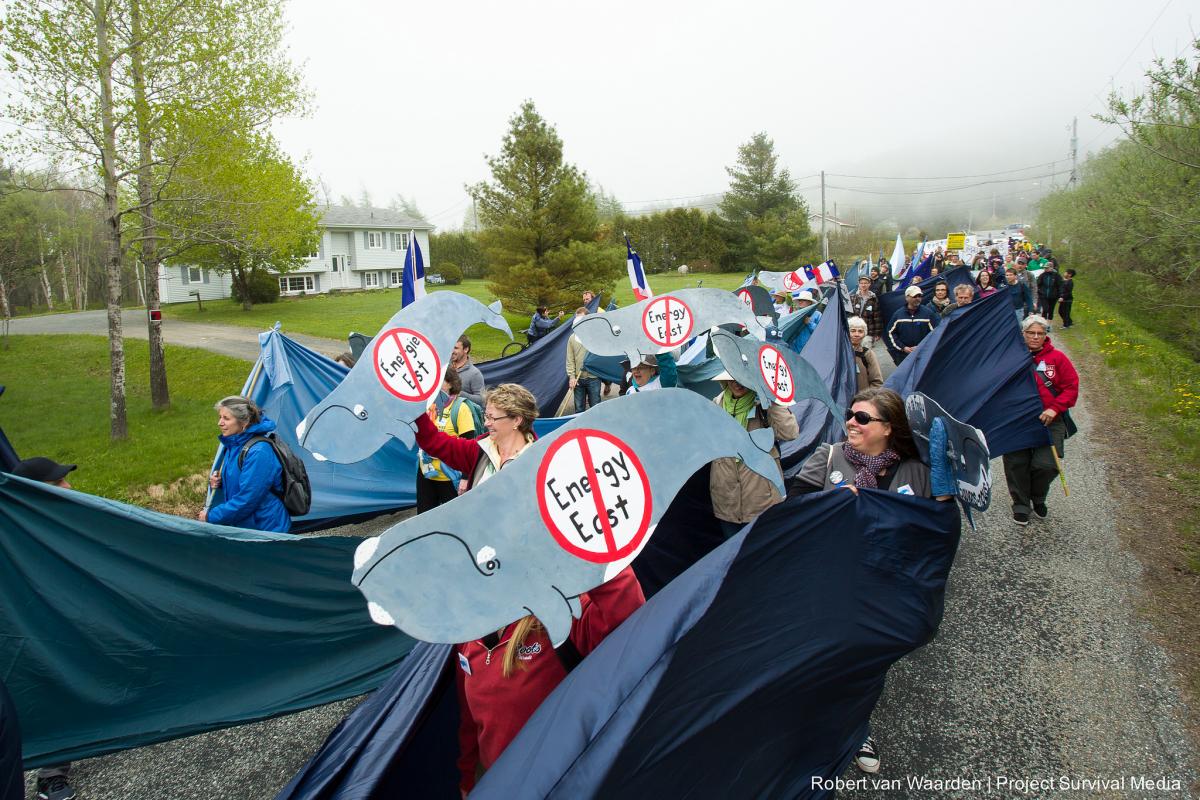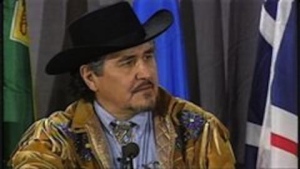
By Pam Palmater, reposted from Policy Options, Apr 13, 2016
In February 1992, six Innu children were killed in a house fire in Davis Inlet, Newfoundland and Labrador. One year later, in January 1993, six Innu children there were caught sniffing gasoline on camera, yelling that they wanted to die. This captured the media’s attention for several weeks until it eventually faded. By then, the media had shifted its focus to the results of an inquest stemming from a suicide crisis in Elsipogtog First Nation, a Mi’kmaw community in New Brunswick, which had seven suicides and 75 suicide attempts in 1992. A special report on suicide in First Nations communities was released by the Royal Commission on Aboriginal Peoples in 1995.
The report found suicide rates for First Nations were three to four times the national average, and the socio-economic root causes included poverty, lack of housing, inadequate water and sewer services, families torn apart by residential schools and poor health care. The report recommended that the federal government implement a national strategy to address the crisis — but the plan was never implemented.
It was therefore no surprise when another house fire in Sheshatshiu, Newfoundland and Labrador killed two Innu adults and three children in November 2000. When reports of a subsequent suicide pact made by Innu children hit the media, the federal government sent 37 children out of the community for gasoline-sniffing treatment. The solution was thought to be relocation, and so the community was relocated in 2002. Yet in 2005 the suicide rates for the Innu youth were still 17 times those of the rest of the province. As always, the media and corresponding government attention fade away, and so the circle of crisis and neglect repeats itself generation after generation.
Fast-forward to April 2016, and Attawapiskat First Nation in Ontario declared a state of emergency after seeing 11 suicide attempts in one weekend — adding to the 100 suicide attempts made in the previous year alone. Attawapiskat is the same First Nation that declared a state of emergency in 2011 for its lack of housing.
So far, all levels of government and the Assembly of First Nations (AFN) have reacted in the same noncommittal way. The Premier of Ontario has expressed “concern.” The Minister of Indigenous and Northern Affairs has promised to visit the First Nation “if invited.” The AFN expressed “gratitude” to both governments for their support. Prime Minister Justin Trudeau even tweeted about the situation, calling it “heartbreaking,” but promised “continued work” to improve living conditions for all indigenous people. Members of Parliament held an emergency debate on the situation this week.
Sadly, we’ve heard this all before.
After the Innu and Mi’kmaw crises in the 1990s, Eskasoni First Nation in Nova Scotia got media attention in 2009 for its suicide crisis, which saw four suicides of young people within a five-week period. Mathias Colomb Cree Nation in Manitoba made a plea to the federal government for help in 2009 when three children committed suicide. Its pleas went largely unanswered, so in 2013 it turned to the United Nations for help when its suicide rate increased to one every six weeks. Mackwacis, a First Nation in Alberta, hit the headlines when it suffered 40 suicides in 2013 alone. But they were not the only ones, as suicide was the number one cause of premature death for First Nations people in all of Alberta. The same year Neskantaga First Nation in Ontario declared a state of emergency after six suicides.
In 2016, Cross Lake First Nation in Manitoba and Keeseekoose, Cote and The Key First Nations in Saskatchewan all declared suicide crises.
There is one First Nation in Ontario that has been particularly devastated by multiple overlapping crises for decades. Pikangikum has a suicide rate that is 20 times the national rate in Canada. Over the last 20 years, it has had the highest suicide rate in the world, losing nearly 100 of its family members. It had declared a state of emergency in 2011, as 80 percent of Pikangikum homes had no sewers or running water, and the basic necessities of life were missing. As with the Mi’kmaw in New Brunswick and the Innu in Quebec, an inquest was also held in Pikangikum, looking into the 16 suicides of children between the ages of 10 and 19 from 2006 to 2008. The coroner’s report highlighted the lethal impact of racism, colonialism and a dark legacy from residential schools. It concluded that the situation “was not a story of capitulation to death, but rather, a story of stamina, endurance, tolerance, and resiliency stretched beyond human limits until finally, they simply could take no more.”
Canada can’t claim that it didn’t know there were widespread suicide crises in First Nations.
Canada can’t claim that it didn’t know there were widespread suicide crises in First Nations. There have been numerous justice inquiries, royal commissions, inquests, coroner’s reports, studies and research projects done on First Nations suicides. These reports have all identified the same kinds of root causes as the coroner’s report on Pikangikum. It is also important to highlight the fact that Canada bears responsibility for these crises through the theft of indigenous lands and resources, the failure to implement Aboriginal and treaty rights, and ongoing impacts of discriminatory laws and policies. Overt and systemic racism by state actors (police, teachers, health care providers, government officials) and society in general have led to high rates of violence against indigenous peoples and a loss of self-worth and hope for the future. The very same root causes of suicide are behind the crisis of murdered and missing indigenous women and girls, the over-incarceration of indigenous people in prison and the overrepresentation of indigenous kids in foster care.
The Truth and Reconciliation Commission (TRC) report highlighted the intergenerational trauma caused by Canada’s Indian policy of assimilation and decades of racism, violence, discrimination and neglect. Canada’s policies were described as physical, biological and cultural genocide. Canada’s brutal history of violence against indigenous peoples has had a lasting impact on indigenous peoples. Indian policy was lethal and included scalping bounties on indigenous peoples; the forced sterilization of indigenous women; the rape, torture and murders of children in residential schools; and the many deaths in police custody. The fact that we have a crisis of thousands of murdered and missing indigenous women and girls in a country like Canada suggests that state-based racism, violence and neglect continue today.
Just as Canada knows the causes of First Nations suicides, these reports also contain thousands of recommendations on how to address the crisis in the short and long terms. These solutions focus on both emergency and longer-term plans designed and led by First Nations that contain crisis services and increased resources to address all the socio-economic issues set within a deliberate cultural framework and a framework that builds ongoing support for the self-determination of First Nations.
Yet the most significant barrier is lack of political will to take action. It is a conscious choice made by each successive government — federal, provincial and territorial — to turn a blind eye to the suffering and premature deaths of indigenous children.
What is urgently needed is the creation of an emergency management operation — a team including federal, provincial, territorial and First Nations governments and experts — to address the numerous crises in many First Nations. Canada needs to bring to bear all the time, resources and people required to bring clean water, sanitation, housing, food, health and social supports immediately. If Canada can use its massive wealth to help other countries, it can use this wealth to help First Nations — especially since all of Canada’s wealth comes from indigenous lands and resources.
Unfortunately, if Budget 2016 is any indication of the government’s will to act, we are in trouble. The budget does not address funding inequities in essential social services, nor does it provide nearly enough to address the lack of clean water, housing or suicide prevention programs. Talk of a renewed relationship with First Nations and implementation of the TRC recommendations (which include dealing with social services) is clearly just talk, as zero funds were allocated to these promises.
While some commentators, like former prime minister Jean Chrétien (author of the 1969 White Paper proposing elimination of reserves and treaty rights), suggest First Nations like Attawapiskat should simply move to escape the crisis, this is a self-interested suggestion. Relocations have always been about Canada trying to access indigenous lands and resources. Relocations have never benefited First Nations, because the problem has never been location.
When the Innu were relocated, all the problems followed them to the new community, including suicide attempts. The Royal Commission on Aboriginal Peoples detailed the devastating impact of past relocations on First Nations, noting that “the profound cultural loss triggered by relocation leads to stress and despair.” It said a community should be counselled to move only for “very good reasons and in exceptional circumstances;” it should be a completely voluntary decision and should be accompanied by a great deal of advance planning.
While there are many emergency actions that must be put in place in the short term to address the suicides, the longer-term solutions have to include the return of lands and resources, the recognition of indigenous autonomy and the respect and implementation of Aboriginal and treaty rights. Nothing less will save our children from premature deaths.





